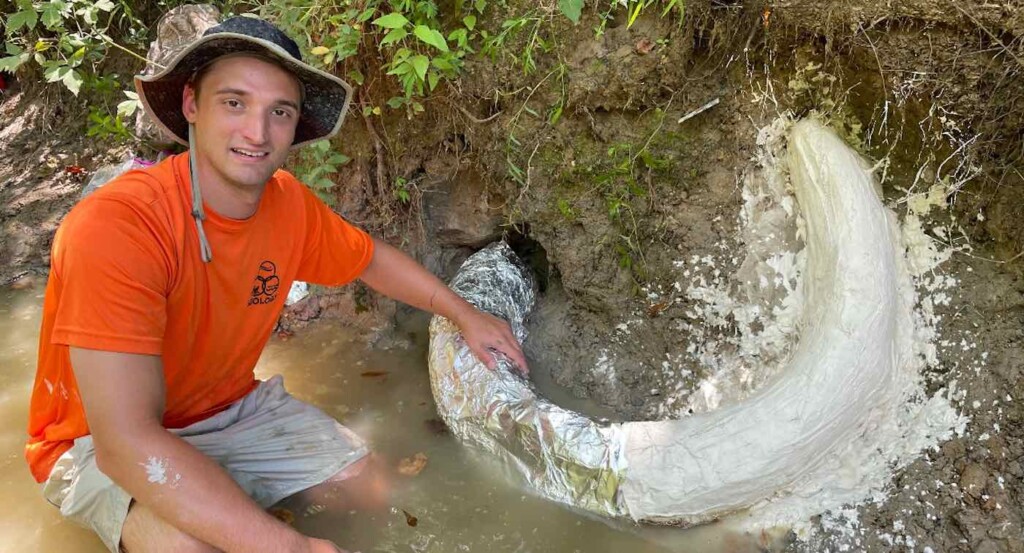Seven-Foot Mammoth Tusk Unearthed in Mississippi Creek Belonged to Largest Species in North America

A fossil hunter in Mississippi recently unearthed an intact mammoth ivory 7 feet long.
Believing it was the tusk of a mastodon, a far more common proboscidean in the area, Eddie Templeton was nevertheless ecstatic to find one that wasn’t fragmented.
But it was only after scientists arrived from the Mississippi Museum of Natural History and were able to examine it that the real former owner of the tusk became clear. It was the ivory of a Colombian mammoth—the largest mammoth in North America, and rarely documented this far south.
He has found mastodon teeth, jaws, saber-tooth cat gnashers, and other Ice Age treasures, but the size, majestic curl, and rarity of the ivory surely places it not only among the most remarkable finds of Templeton’s career, but among the most remarkable in the state’s history, as it’s the first time an intact tusk from this species has been found in the Magnolia State.
“Mississippi was home to three Proboscideans during the last ice age: Mastodon, Gomphothere, and the Columbian mammoth. All three possessed ivory tusks,” the Mississippi Museum of Natural History wrote in a statement regarding the discovery.
“Mastodons are by far the most common Proboscidean finds in Mississippi as they were browsers, like modern deer, and inhabited a variety of different environments. Mammoths which were related to modern elephants are far less common finds in Mississippi as they were open grassland grazers and would have been at home in only a select few environments, particularly the prairie regions of Mississippi.”
The Columbian mammoth could grow 10 feet tall and weigh 15 tons, but despite this size advantage, the smaller wooly mammoth outlived them by about 6,000 years.
OTHER MAMMOTH BITS: Amateur Fossil Hunter Calls Her Shot, Finding a Giant Mammoth Tooth After Declaring She Would on Her Birthday
The ivory was transported to the Museum of Natural History after being covered in tin foil, slathered with plaster, and wrapped in burlap—the technical procedure for exhuming a fossil from the ground.
Once the plaster jacket containing the fossil tusk dried, it was carefully lifted onto a makeshift gurney fashioned from an ATV ramp. The fossil specimen in the jacket weighed about 600 pounds.
ICE AGE REMAINS IN MISSISSIPPI: Man Finding an American Lion Tooth Fossil in Shallow Mississippi is ‘the Biggest of Deals‘ to Scientists
Stuck in the mud for over 10,000 years, the tusk is well preserved, but contact with oxygen can cause rapid deterioration, so once the covering is removed, a glaze rather like the kind used to laminate safety glass in car windows will be applied in order to put the ivory on display, slated for spring 2025.
SHARE The News Of This Incredible Discovery With Your Friends…
>read more at © GoodNews
Views: 2